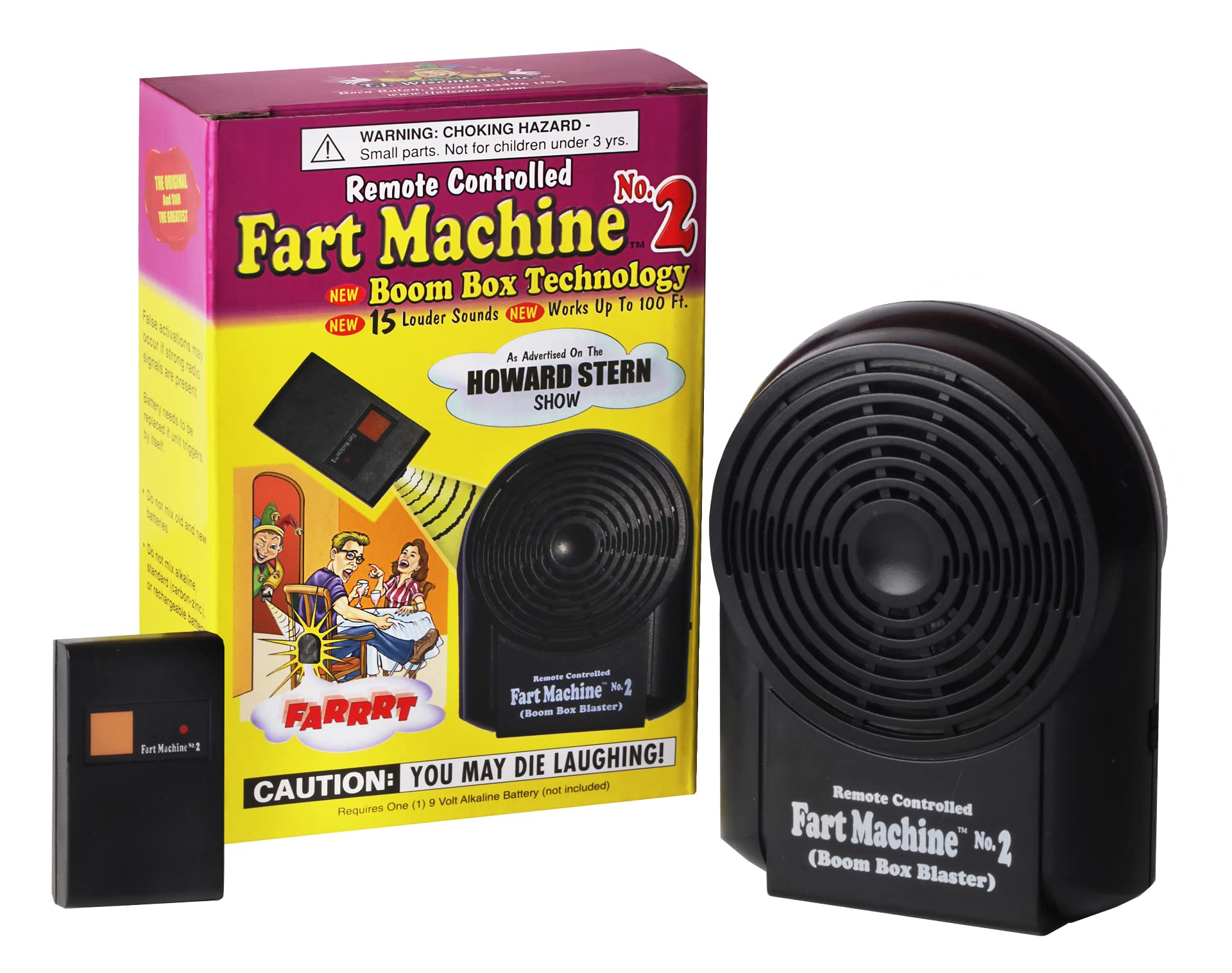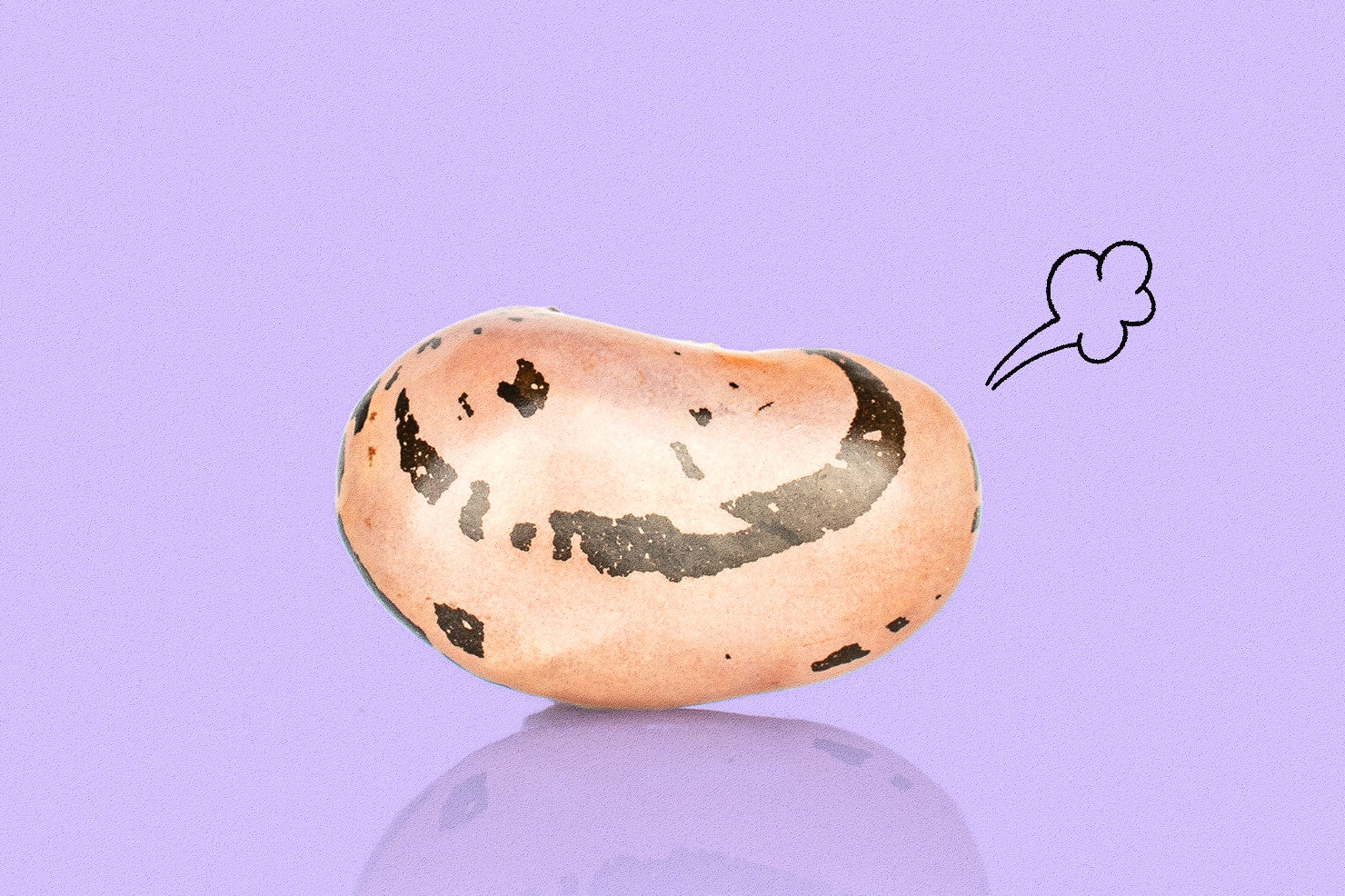

FAQs
How To Make A Newborn Fart
Modified: August 5, 2023
Learn effective techniques and tips on how to make a newborn fart. Get answers to all your general questions about helping your baby relieve gas.
(Many of the links in this article redirect to a specific reviewed product. Your purchase of these products through affiliate links helps to generate commission for Under-tec.com, at no extra cost. Learn more)
Table of Contents
Introduction
Welcoming a newborn into the world is an exciting and joyous occasion. However, as a new parent, you may also encounter various challenges and uncertainties related to your baby’s well-being. One common concern that many parents face is discomfort caused by trapped gas in their newborn’s tummy. This discomfort can make your little one fussy, cry, and have trouble sleeping.
Understanding how to help your newborn fart can provide relief from their discomfort and help both you and your baby have a more peaceful and enjoyable experience. While it may seem trivial, farting is a natural and essential bodily function that helps release excess gas in the digestive system.
Although newborns have yet to master the art of passing gas on their own, there are techniques and methods that you can employ to help facilitate the process. In this article, we will explore different strategies to assist your baby in farting comfortably. From burping techniques to gentle tummy massages and changes in feeding methods, you will learn how to provide relief to your little one and restore their contentment.
It’s important to note that every baby is unique, and what works for one may not work for another. Therefore, it may take some trial and error to find the most effective methods for helping your specific newborn. However, by staying patient, observant, and attuned to your baby’s cues, you will be better equipped to address their discomfort and promote a healthy digestive system.
Read on to discover the signs of discomfort caused by gas in a newborn and learn effective techniques to assist them in farting and finding relief.
Understanding the Importance of Farting for Newborns
While the act of farting may seem trivial, it plays a crucial role in a newborn’s digestive system. Gas can build up in a baby’s tummy through the normal digestion process or when they swallow air during feeding or crying. When this gas becomes trapped, it can cause discomfort and pain for your little one. Farting helps release this excess gas, providing relief for your baby’s digestive system.
Moreover, farting is an indication that your baby’s digestive system is functioning properly. It shows that their body is effectively breaking down milk or formula, absorbing nutrients, and eliminating waste. When you notice your baby farting, it is a positive sign that their digestive system is developing as it should.
Additionally, regular farting can prevent the buildup of gas, which can lead to colic, a condition characterized by extended periods of intense crying and fussiness in infants. Helping your newborn fart can help prevent colic and make both you and your baby’s lives more peaceful and comfortable.
It’s important to remember that excessive gas or difficulty farting can be a sign of an underlying issue, such as lactose intolerance or a sensitivity to certain foods. If your baby continues to experience extreme discomfort or if you have concerns about their gas, it is advisable to consult with a pediatrician for further evaluation and guidance.
Now that we understand the importance of farting for newborns and its impact on their well-being, let’s explore the telltale signs that indicate your little one may be experiencing discomfort due to trapped gas.
Signs of Newborn Discomfort Due to Gas
As a parent, it’s essential to be aware of the signs that your newborn is experiencing discomfort due to gas. While every baby is different, there are some common indicators to watch out for:
1. Fussiness and Crying: If your baby is constantly fussy, irritable, or inconsolable, it could be a sign that they are experiencing discomfort from trapped gas. They may cry more often and have difficulty settling down.
2. Distended or Hard Belly: A swollen or firm abdomen can indicate that your baby has excessive gas. You may notice that their tummy appears bloated or feels firm to the touch.
3. Pulling Legs to the Chest: When babies experience gas discomfort, they often try to find relief by pulling their legs towards their chest. This action can help alleviate pressure in the tummy.
4. Difficulty Sleeping: Gas bubbles can disrupt a baby’s sleep, making it challenging for them to settle or stay asleep. You may notice that your baby wakes frequently or has restless sleep patterns.
5. Excessive Burping: If your baby is frequently bringing up small amounts of milk or formula after feeding, it may indicate that they are swallowing air during feeding and experiencing gas-related discomfort.
6. Passing Excessive Gas: While it may seem contradictory, some babies with gas discomfort may have difficulty passing gas. They may grunt, strain, or have a more significant release of gas once it finally passes.
7. Changes in Feeding Patterns: A baby experiencing gas discomfort may show aversions to the bottle or breast. They may become fussy or pull away during feeding sessions.
8. Interrupted Bowel Movements: Gas can affect your baby’s bowel movements. They may have more frequent or less regular bowel movements, or they may appear to be struggling during passing stool.
9. Increased Clenching: Babies with gas may clench their fists, tighten their facial muscles, or exhibit signs of overall tension, indicating their discomfort.
10. Generalized Restlessness: If your baby seems overall uneasy or restless, it may be a sign that they are experiencing discomfort associated with gas.
Remember that these signs alone may not necessarily indicate gas-related discomfort, as they can also be attributed to other factors. If you are unsure or concerned about your baby’s symptoms, it is always recommended to consult with a healthcare professional for a proper evaluation and guidance.
Now that we are aware of the signs of newborn discomfort due to gas, let’s explore effective techniques to help your baby fart and find relief.
Techniques to Help a Newborn Fart
When your newborn is experiencing discomfort due to trapped gas, there are several techniques you can try to help them fart and find relief. These techniques are gentle and can be incorporated into your daily routine. Remember to be patient and observe your baby’s cues to determine which methods work best for them.
1. Burping Techniques: Burping your baby during and after feedings can help release trapped air. Hold your baby upright against your shoulder or sit them on your lap while supporting their chin and chest. Gently pat or rub their back in an upwards motion to encourage burping.
2. Gentle Tummy Massage: Massaging your baby’s tummy can help relieve gas and promote digestion. Lay your baby on their back and use gentle, circular motions with your fingertips around their belly button. Be cautious not to apply too much pressure.
3. Bicycle Leg Movements: Lay your baby on their back and gently move their legs in a cycling motion. This movement can help stimulate bowel movements and release gas. You can also gently press their legs against their tummy for additional relief.
4. Warm Compress on the Tummy: Applying a warm compress to your baby’s tummy can help soothe discomfort and encourage the release of trapped gas. Use a warm (not hot) towel or a warm water bottle wrapped in a cloth. Ensure the temperature is comfortable for your baby’s delicate skin.
5. Changing Feeding Techniques: Adjusting the way you feed your baby can help reduce the amount of swallowed air. Keep your baby in an upright position during feeding, and ensure they are latched properly if breastfeeding. If bottle-feeding, choose bottles with anti-colic features and pace the feeding to allow for breaks.
6. Using Over-the-Counter Gas Relief Drops: Consult with your pediatrician about the use of over-the-counter gas relief drops for infants. These drops can help break up gas bubbles and facilitate easier passing of gas. Follow the recommended dosage and instructions provided by your healthcare professional.
It’s important to note that not all techniques may work for every baby. Experiment with different methods and observe your baby’s response to find the most effective technique for them. Keep in mind that consistency and patience are key when using these techniques.
Now that we have explored various techniques to assist your newborn in farting, it’s time to see how these methods can provide much-needed relief and comfort for your little one.
Burping Techniques
Burping your baby is a simple yet effective method for helping them release trapped air and reducing the discomfort caused by gas. By incorporating burping into your baby’s feeding routine, you can minimize the chances of excessive gas buildup and alleviate their discomfort.
Here are some burping techniques that you can try:
1. Over the Shoulder: Position your baby against your shoulder, supporting their head and bottom with one hand while gently patting or rubbing their back with the other hand. The slight pressure and upward motion can help expel the trapped air through burping.
2. Sitting on Lap: Sit your baby on your lap, keeping their back supported. Lean them slightly forward and use one hand to pat or rub their back while the other hand supports their chest. This position can also encourage burping and gas release.
3. Face-Down on Lap: Place your baby face-down across your lap, with their head supported on one thigh and their stomach resting on your other thigh. Gently pat or rub their back in an upward motion. This position can apply gentle pressure on their tummy, aiding in burping.
4. Face-Up on Lap: Lay your baby face-up on your lap, supporting their neck and head with one hand. Use the other hand to pat or rub their chest and back in an upward motion. This position can help release trapped air from their stomach.
5. Supported Upright Position: Sit your baby in an upright position on your lap, supporting their head and chest with one hand and ensuring their chin is slightly tilted upwards. Gently pat or rub their back to encourage burping.
Remember to be patient during the burping process, as it may take a few minutes for your baby to release the trapped air. It’s also important to have a burp cloth or bib handy to catch any spit-up or milk that may come up during burping.
Try different burping techniques to see which one works best for your baby. Some babies may respond better to one position over another, so feel free to experiment until you find what works for you both. Burping sessions can be done in between feeding or after each side if you are breastfeeding.
By regularly incorporating burping techniques into your baby’s routine, you can help them release trapped gas and reduce discomfort caused by gas buildup.
Now let’s move on to explore another technique that can help your newborn fart comfortably: gentle tummy massage.
Gentle Tummy Massage
Gentle tummy massage is a soothing technique that can help stimulate your baby’s digestion and alleviate discomfort caused by trapped gas. A gentle massage can also provide a bonding experience between you and your little one while promoting relaxation.
Follow these steps to perform a gentle tummy massage:
1. Choose a Comfortable Area: Find a calm and quiet space where you and your baby can relax. Lay your baby on a soft surface, such as a changing table or your lap, with their back comfortably supported.
2. Warm up Your Hands: Rub your hands together vigorously or run them under warm water for a few seconds to warm them up. This will help create a soothing sensation for your baby’s tummy.
3. Apply Gentle Pressure: Place your hands on your baby’s tummy, starting just below the ribcage. Use gentle, circular motions with your fingertips to apply a light pressure. Always make sure that your touch is gentle and does not cause any discomfort to your baby.
4. Follow the Clockwise Direction: Continue massaging in a clockwise direction, following the natural path of the digestive system. This can help stimulate the movement of gas through the intestines.
5. Pay Attention to Baby’s Cues: Observe your baby’s reaction to the massage. If they seem uncomfortable or fussy, adjust your pressure or technique accordingly. Some babies may prefer a lighter touch, while others may enjoy a slightly firmer massage.
6. Massage Other Areas of the Body: Extend the massage to other areas of your baby’s body, such as their legs and feet. This can help relax their entire body and provide a more holistic soothing experience.
7. Maintain Eye Contact and Sing or Talk: Maintain eye contact with your baby throughout the massage. Sing a gentle lullaby or talk to them in a soothing voice. This will help create a calm and comforting atmosphere, enhancing the relaxation effect.
It’s important to note that a tummy massage should be done when your baby is calm, and not immediately after a feeding. Avoid massaging your baby’s tummy if they have a full tummy or if they show signs of discomfort or pain. Always respect their cues and preferences.
Gentle tummy massages can help stimulate your baby’s digestive system, promote the passage of trapped gas, and provide relief from discomfort. It can also be a precious bonding experience for both you and your baby.
Next, we will explore another technique that can help your newborn fart comfortably: bicycle leg movements.
Bicycle Leg Movements
Bicycle leg movements are a simple yet effective technique to help your baby fart and relieve gas discomfort. This gentle exercise mimics the motion of riding a bicycle and can help stimulate your baby’s digestive system, promoting the release of trapped gas.
Follow these steps to perform bicycle leg movements:
1. Find a Comfortable Position: Lay your baby on their back on a soft surface, such as a changing table or a blanket on the floor. Make sure your baby is comfortable and supported.
2. Gently Hold the Legs: One at a time, lift your baby’s leg and hold it just above the knee joint with one hand. Use your other hand to hold their ankle or foot for stability.
3. Start Bicycle Motion: Begin moving your baby’s leg in a gentle, circular motion, resembling the pedaling motion of a bicycle. Slowly move the leg forward and then bend it back towards their tummy.
4. Alternate Legs: After a few rotations, switch to the other leg and repeat the same motion. Continue alternating between the legs for a few minutes or until you notice signs of relief or relaxation in your baby.
5. Observe Your Baby’s Comfort: Pay attention to your baby’s cues during the bicycle leg movements. If they show signs of discomfort or resistance, adjust the pace or pressure of the movements accordingly. Always ensure that your baby is comfortable and not experiencing any pain.
6. Combine with Gentle Tummy Massage: To enhance the effectiveness, you can incorporate gentle tummy massage while performing the bicycle leg movements. This combination can further stimulate digestion and help release gas.
Bicycle leg movements can be performed throughout the day, whenever your baby seems gassy or uncomfortable. It can also be a fun and engaging activity to do with your little one, promoting their motor development and providing a bonding experience.
Remember to be gentle and maintain a calm and soothing environment while performing bicycle leg movements. If your baby has any pre-existing medical conditions or shows signs of pain, consult with your pediatrician before attempting this technique.
Now that you have learned about bicycle leg movements, let’s explore another helpful technique to assist your newborn in farting comfortably: using a warm compress on the tummy.
Warm Compress on the Tummy
A warm compress applied to your baby’s tummy can help soothe discomfort caused by trapped gas and promote relaxation. The gentle warmth can aid in relaxing the muscles in the abdomen, facilitating the release of trapped gas and providing relief.
Here’s how you can use a warm compress on your baby’s tummy:
1. Prepare a Warm Compress: Wet a clean cloth with warm water. Make sure the temperature is comfortably warm and not too hot to avoid burning your baby’s delicate skin. Alternatively, you can use a warm water bottle wrapped in a soft cloth.
2. Wring Out Excess Water: Squeeze out any excess water from the cloth or towel so that it is damp but not dripping wet.
3. Position Your Baby: Lay your baby on their back on a soft surface, such as a changing table or a blanket on the floor. Ensure your baby is comfortable and their tummy is exposed.
4. Apply the Warm Compress: Gently place the warm compress on your baby’s tummy, covering the area below the ribcage. Make sure it’s not too hot and doesn’t cause any discomfort to your baby.
5. Hold the Compress in Place: Use your hand to hold the warm compress gently against your baby’s tummy. Maintain a soothing and gentle pressure.
6. Observe Your Baby: Keep an eye on your baby’s response to the warm compress. If they seem to relax or show signs of relief, you can continue holding it in place for a few minutes. If your baby shows any discomfort, remove the compress and try other techniques.
7. Use Caution: Always use caution when applying heat to your baby’s skin. The temperature should be warm and comfortable, not hot. Avoid using heating pads or electric blankets, as they may be too hot for your baby’s delicate skin.
A warm compress can be used as needed throughout the day or during times when your baby is particularly gassy or fussy. It can provide a comforting sensation and help relieve gas-related discomfort.
Remember to never leave your baby unattended with a warm compress, and always test the temperature on your own skin before applying it to your baby’s tummy to ensure it’s safe and comfortable.
Now that you’ve learned about using a warm compress on the tummy, let’s explore another technique to help your newborn fart comfortably: changing feeding techniques.
Changing Feeding Techniques
Changing the way you feed your baby can play a crucial role in reducing gas and promoting comfortable digestion. By adjusting feeding techniques, you can minimize the amount of swallowed air and reduce the likelihood of gas-related discomfort for your little one.
Consider the following tips to change your feeding techniques:
1. Keep Your Baby Upright: When bottle-feeding, ensure that your baby is in an upright position to minimize the intake of air. Hold the bottle in a way that the nipple is always filled with milk, preventing your baby from swallowing excess air.
2. Breastfeeding Position: If you are breastfeeding, pay attention to the position and latch. Ensure that your baby is properly latched onto your breast to prevent excessive air intake. You may need to experiment with different breastfeeding positions to find the most comfortable and efficient one for both you and your baby.
3. Take Frequent Breaks: During feeding, pause periodically to burp your baby. This allows any swallowed air to be released before it accumulates and causes discomfort. Burping can be done by patting or gently massaging your baby’s back in an upward motion.
4. Pace the Feeding: Instead of allowing your baby to gulp down large amounts of milk or formula quickly, try to pace the feeding. Offer smaller, more frequent feedings, allowing your baby to have breaks to rest and swallow less air.
5. Avoid Overfeeding: Be mindful not to overfeed your baby, as this can lead to excessive gas and discomfort. Watch for signs of satiety, such as turning away from the bottle or releasing the breast.
6. Check the Bottle Nipple: If you are using a bottle, make sure that the nipple is the appropriate size for your baby’s age. Using a slower-flow nipple can help prevent your baby from swallowing excess air while feeding.
7. Feed in an Upright Position: As much as possible, keep your baby in an upright position while feeding to facilitate the downward flow of milk or formula and minimize the chances of air swallowing.
8. Burp During and After Feeding: Remember to burp your baby during and after each feeding session. This allows any trapped air to be released and reduces the likelihood of gas discomfort later on.
9. Consider Elimination Diets: If you are breastfeeding and suspect that your baby’s gas discomfort is caused by a specific food you are consuming, consult with a healthcare provider about elimination diets or dietary changes that may help alleviate the symptoms.
By implementing these feeding techniques, you can significantly reduce the amount of swallowed air during feedings and minimize the occurrence of gas-related discomfort for your baby.
Remember, finding the right feeding technique may require some trial and error. It’s essential to be patient and observe how your baby responds to the changes you make. If you have concerns about your baby’s feeding habits or suspect an underlying issue, consult with a pediatrician for guidance.
Next, we will explore another technique that can provide relief for your newborn: using over-the-counter gas relief drops.
Using Over-the-Counter Gas Relief Drops
If your baby continues to experience discomfort from trapped gas and other techniques do not provide sufficient relief, you may consider using over-the-counter gas relief drops specifically formulated for infants. These drops contain simethicone, an ingredient that helps break down gas bubbles in the digestive system.
Here are some key points to consider when using over-the-counter gas relief drops:
1. Consult with a Healthcare Professional: Before using any medication or gas relief drops for your baby, it is essential to consult with your pediatrician or healthcare provider. They can provide guidance on the appropriate dosage and usage.
2. Follow the Instructions: Read and follow the instructions provided with the gas relief drops carefully. Be sure to use the correct dosage suitable for your baby’s age and weight.
3. Administer the Drops Correctly: Most gas relief drops are given orally using a dropper or syringe. Measure the recommended dosage and administer the drops as instructed by your healthcare professional.
4. Be Mindful of Allergies and Sensitivities: Inform your healthcare provider about any known allergies or sensitivities your baby may have. It’s important to check the ingredients in the gas relief drops to ensure they are safe for your baby to consume.
5. Use as a Temporary Solution: Gas relief drops should be used as a temporary solution to alleviate gas discomfort. They are not intended for long-term use. If your baby’s gas problems persist or worsen, consult with your healthcare provider for further evaluation.
6. Observe Your Baby’s Response: Pay attention to how your baby responds to the gas relief drops. If you notice any adverse reactions or if the drops do not seem to provide relief, discontinue use and consult with your healthcare provider.
7. Combine with Other Techniques: Gas relief drops can be used in conjunction with other techniques discussed earlier, such as burping, gentle tummy massage, and changes in feeding techniques. Combining these methods may provide the best results for relieving your baby’s gas discomfort.
Remember that every baby is different, and what works for one may not work for another. It’s essential to observe your baby’s response and consult with your healthcare provider for personalized advice.
Over-the-counter gas relief drops can provide temporary relief from gas-related discomfort in infants. However, they should be used judiciously and in consultation with a healthcare professional.
Now that we have explored various techniques to help a newborn fart comfortably, let’s review what we have learned and conclude our discussion.
Conclusion
Helping your newborn fart and relieving them from gas discomfort is an important aspect of caring for your little one’s overall well-being and comfort. By understanding the importance of farting for newborns and recognizing the signs of gas discomfort, you can better address their needs and promote a healthy digestive system.
In this article, we have explored various techniques to help your newborn fart comfortably. From burping techniques to gentle tummy massages, bicycle leg movements, warm compresses on the tummy, changing feeding techniques, and using over-the-counter gas relief drops, there are multiple approaches you can try to alleviate your baby’s gas-related discomfort.
Remember that every baby is different, and it may take some trial and error to find the most effective techniques for your little one. Be patient, observant, and attuned to your baby’s cues to determine what works best for them.
In addition to these techniques, it’s also important to maintain a healthy feeding routine, ensure proper positioning during feedings, and practice good burping habits. Establishing a supportive and calm environment during feedings can contribute to reducing the intake of air and preventing excessive gas build-up.
If you have any concerns or questions about your baby’s gas discomfort or feeding habits, it is always advisable to consult with your pediatrician or healthcare provider. They can provide personalized guidance and support based on your baby’s unique needs.
Remember, caring for your newborn and addressing their gas discomfort is a learning process. With patience, love, and attentiveness, you can help your baby find relief, promote healthy digestion, and create a more comfortable and enjoyable experience for both of you.










